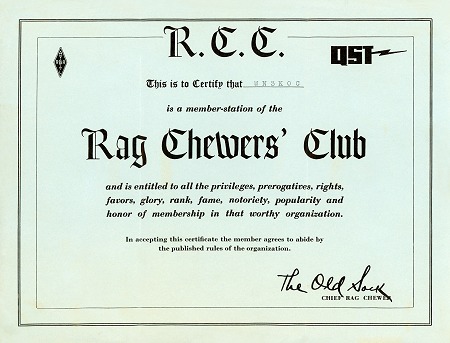
 Ham Radio Nostalgia
Ham Radio Nostalgia
 |
|
| Rag Chewer's Club
Award |
My
first operating award was the Rag Chewers' Club Award.
This award, offered by the ARRL, was the first award earned by
novices. To qualifiy for the award you had to submit proof
of a two way CW contact lasting at least 30 minutes.
I
was a Novice from June 19th to December 12, 1968. During that
time I made about 700
CW contacts.
The
majority of my novice contacts were made on 40 and 15 meters. The
remaining contacts were made on 80 meters by loading my 40 meter
dipole.
In October of 1968 I ventured into downtown Baltimore
City
to the FCC field office located in the Custom House to take the
General exam. In those days, you had to go to an FCC field office to take
the Technician, General, Advanced, and Extra class exams before an FCC
examiner. The
exam was administered in two parts. First an FCC field engineer
administered the code test. The CW was sent with a paper tape
machine. Five minutes of plain text code was played at 13 words
per minute. In order to pass the test you had to copy one minute
of the five minutes with no errors using pencil and paper. Then
the examiner gave you some plain text to send using a straight key at
13 words per minute. You sent the text at 13 words per minute
until the examiner told you to stop. If you passed the code test
you then took the written test which consisted of multiple choice
questions, some of which required identification of electrical circuits and some of the questions required some
math to calculate an answer using your knowledge of electronic circuit
theory. When you completed the test you handed the paper to a
secretary who checked your answers and told you whether you passed or
failed the written test If you passed, then you waited for your license to arrive in the mail. If you failed the test, you had to wait 30 days before you could take the test again.
I approached upgrading conservatively, studying for one exam at a time. In early 1969, I went back to the Custom House and took the Advanced test. If you did not take the exams back-to-back you had to wait 30 days before you could take the test again. I received my General ticket on December 13, 1968 and my Advanced ticket in late March 1969. After receiving my General ticket I started working 20 meters using the second harmonic of my 40 meter crystals. While operating on 20 meters I heard more DX in a week than I had heard in six months as a novice and was bitten by the DX bug. As the passage of time has shown, I would never shake the DX bug.
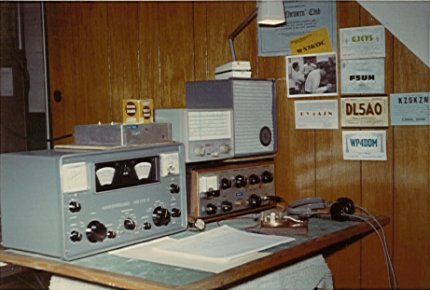 |
|
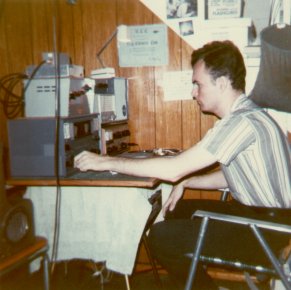 |
|
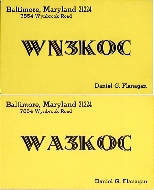 |
|
| WA3KOC early 1969 |
WA3KOC 1969 |
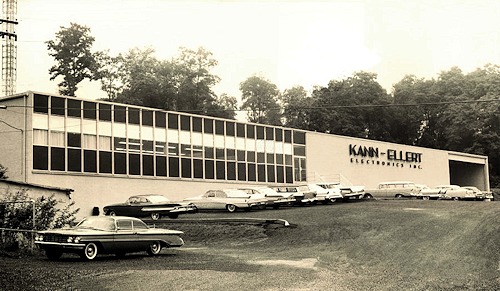 |
|
|
| Kann-Ellert Store
in West Baltimore 1969 |
First DX QSL |
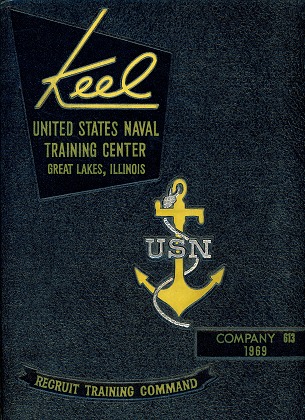 |
|
 |
|
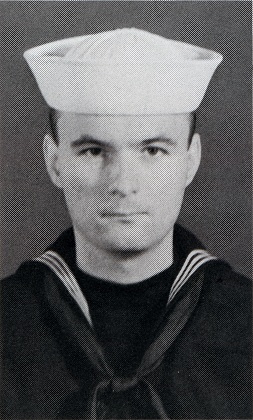 |
|
| Boot camp Year Book
1969 |
First day of Navy boot camp at Great Lakes |
Boot camp photo 1969 |
In early January 1970, I shipped out to Florida to attend
Communications 'A' School at the Navy Communications Training Center
(NCTC), Cory Field, in Penscola, Florida. From early January to
early May 1970, I attended school during the day and operated from the
base club station WA4ECY during my non-duty hours. The club
station was well equipped, consisting of a Swan 500 transceiver, a Swan
KW amplifier, and a Mosley TA-33 on a 70 foot tower. There were
about a dozen active club members. Shown below are two of the
club's QSL cards. I graduated from 'A' school in early May at the
top of my class and was able to pick my first duty station. I
chose RAF Edzell, in northeast Scotland since it was one of the Navy's
best duty stations. After 'A' school I went home for two weeks of
military leave before leaving for Scotland.
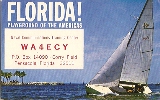 |
|
 |
|
| NCTC Corry Field Club
Station QSL |
|||
|
|
|
|
| Entrance to RAF
Edzell |
RAF Edzell, near the village of Edzell was located midway
between the larger towns of Montrose and Brechin near the North Sea on
the east coast of Scotland. The base was a World War II
Royal Air Force Base that was leased by the Navy. A
communications building surrounded by a wullenweber antenna array shown in
the photo below, was located on an air field about a mile
from the main part of the base. This building was where I spent
all of my on-duty hours. The building was manned 24 hours a day,
seven days a week. We manned rotating watches, working two eve
watches (4 pm to 11 pm), two mid watches (11 pm to 7 am), two day
watches (7 am to 4 pm), then took 80 hours off before starting the cycle over again.
At first I used a bicycle and the local bus transportation to
get
around. There were two busses that stopped at the base each
day. During my off duty time, I would ride into Edzell and up
into the nearby countryside with one of my buddies (a non-ham).
For the first six months I used the bus and the bicycle to get around,
visitng Edzell, Montrose and Brechin regularly. In early 1971, I
took driving lessons and obtained a British drivers license and started
exploring more of the countryside by automobile. My first car was
a 1963 Austin A40 which I purchased from a local bloke. I visited
Edinburgh several times, Glasgow, Inverness, Loch Ness, Aberdeen,
Dundee, St. Andrews, Fettercairn, Stonehaven, Brechin, Montrose,
Forfar, Perth, and others, the names I no longer remember. On one
of the trips to Edinburgh I met our family dentist for dinner. He
was vacationing in Scotland that year. Edinburgh was a very
intersting city, one of the cleanest I had ever seen. I visited
Edinburgh's castles and gardens during my road trips there.
In
late 1971, after many miles, the A40 developed mechancial problems so I
scrapped it and purchased a second hand Singer Gazelle (not a sewing
machine) which was a larger more comfortable car for touring on the
Scottish roadways.
|
|
 |
||
| My first car, a
1963 Austin A-40 |
My second car, a
1960s Singer Gazelle |
Shown below is the entrance to the village of Edzell, about 4
miles
by road from the base and the communications building where I worked.
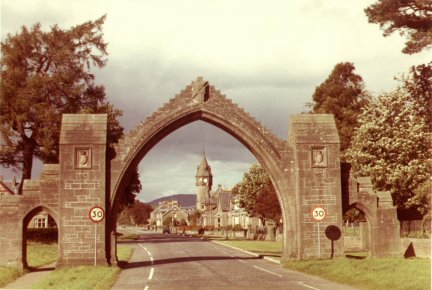 |
|
||
| Entrance to the village of Edzell |
View of the communications building from the runway on the base |
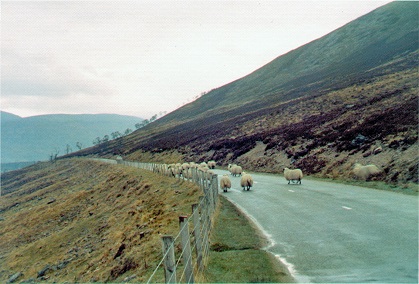 |
|
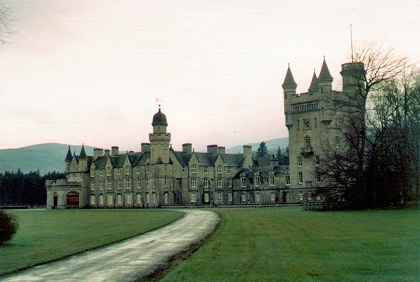 |
|
| Typical scene along the roadways of northern Scotland | Balmoral Castle |
After settling in at RAF Edzell, I applied for a reciprocal
license
in the summer of 1970 and was issued the callsign GM5ASI. I made
my first contacts as GM5ASI in August 1970. The photo and
accompanying article shown below was published in the base newspaper,
The Tartan Log. I operated regularly from the club station which
consisted of a Swan 350, a two element GEM quad on a 30 foot TV
tower. We later (I think it was spring 1971) erected an 80 meter
quarter wave vertical which was made from some spare TV tower. I
spent
many hours burying 60 quarter wave radials under this antenna to
improve its DX performance. The Drake 2B receiver shown next to
the Swan 350 belonged to another club member, Steve, then WA4UAZ, now
K4EU. The Swan receiver was as "broad as a barn door"on CW.
The Drake receiver and vertical allowed me to contact friends back in
the U.S. who kept nightly schedules on 80 meter CW. I worked 80
and 40 meters with the vertical and 20, 15, and 10 meters with the
quad. Most of my on-the-air time was spent on 20 and 15 meters
looking for DX and my friends back home.
During my two years in Scotland I was able to work 191 countries
and all states.
When conditions were good there were many nights when I stayed
up working U.S.stations on 20 meters past local sunrise. When I
was off duty and not chasing DX, I spent most of my free time in
Brechin and Montrose. Brechin had a pub called Jolly's which was
a popular hang-out for the Navy guys and local female population.
Brechin had a nice restaurant where you could have a great steak
dinner (genuine Angus steak) for about 2 pound,(4+ dollars).
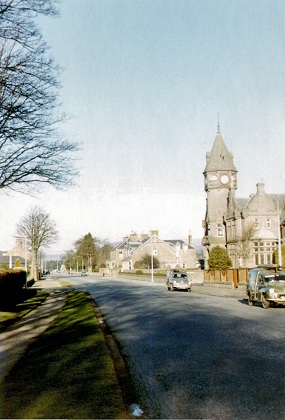 |
|
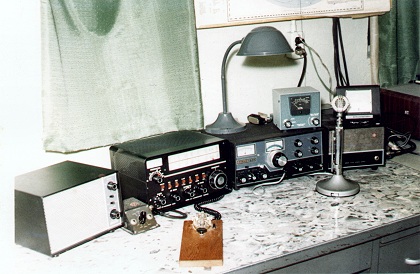 |
|
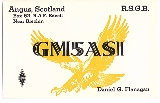 |
| Village of Edzell |
RAF Edzell amateur radio club station |
GM5ASI QSL |
I had a friend named Tony who was a reporter for the base newspaper
called the Tartan Log. He had an interest in amateur radio and
interviewed me for an article that was published in the Tartan Log.
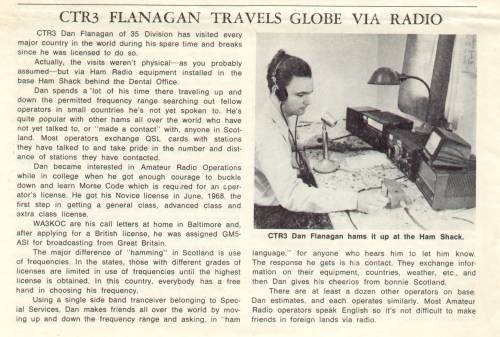 |
|
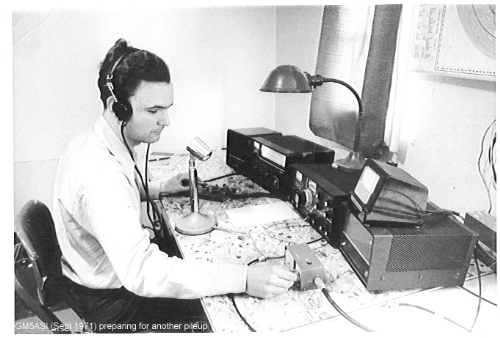 |
| Tartan Log article |
GM5ASI at the controls of the club station |